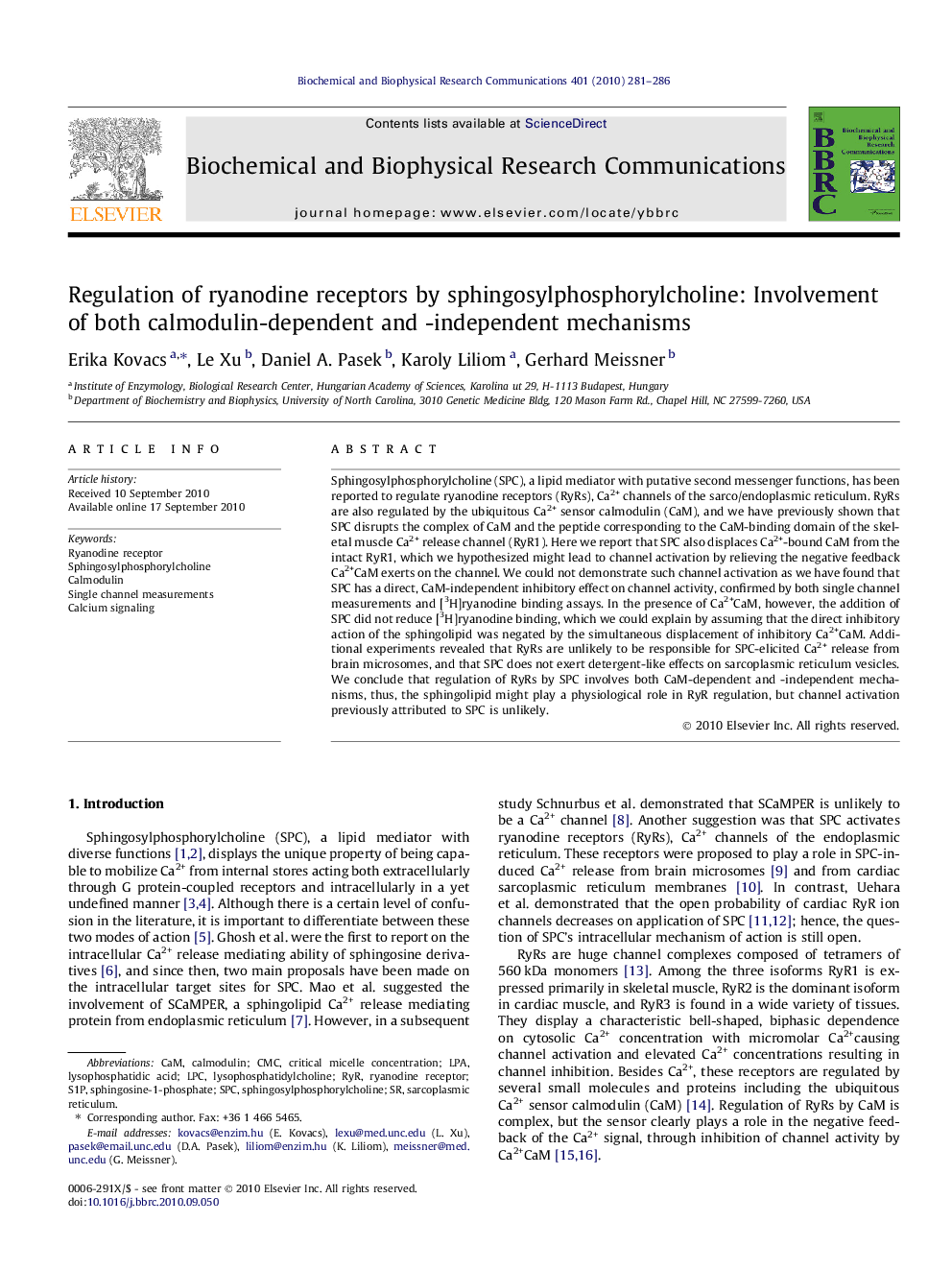| Article ID | Journal | Published Year | Pages | File Type |
|---|---|---|---|---|
| 1931063 | Biochemical and Biophysical Research Communications | 2010 | 6 Pages |
Sphingosylphosphorylcholine (SPC), a lipid mediator with putative second messenger functions, has been reported to regulate ryanodine receptors (RyRs), Ca2+ channels of the sarco/endoplasmic reticulum. RyRs are also regulated by the ubiquitous Ca2+ sensor calmodulin (CaM), and we have previously shown that SPC disrupts the complex of CaM and the peptide corresponding to the CaM-binding domain of the skeletal muscle Ca2+ release channel (RyR1). Here we report that SPC also displaces Ca2+-bound CaM from the intact RyR1, which we hypothesized might lead to channel activation by relieving the negative feedback Ca2+CaM exerts on the channel. We could not demonstrate such channel activation as we have found that SPC has a direct, CaM-independent inhibitory effect on channel activity, confirmed by both single channel measurements and [3H]ryanodine binding assays. In the presence of Ca2+CaM, however, the addition of SPC did not reduce [3H]ryanodine binding, which we could explain by assuming that the direct inhibitory action of the sphingolipid was negated by the simultaneous displacement of inhibitory Ca2+CaM. Additional experiments revealed that RyRs are unlikely to be responsible for SPC-elicited Ca2+ release from brain microsomes, and that SPC does not exert detergent-like effects on sarcoplasmic reticulum vesicles. We conclude that regulation of RyRs by SPC involves both CaM-dependent and -independent mechanisms, thus, the sphingolipid might play a physiological role in RyR regulation, but channel activation previously attributed to SPC is unlikely.
Research highlights► Sphingosylphosphorylcholine (SPC) directly inhibits ryanodine receptor 1 (RyR1). ► SPC also displaces calmodulin (CaM) from the intact RyR1. ► The sphingolipids effect on RyR1 is further modified by the removal of CaM. ► Thus, SPC regulates channel activity in both a CaM-dependent and -independent manner.
